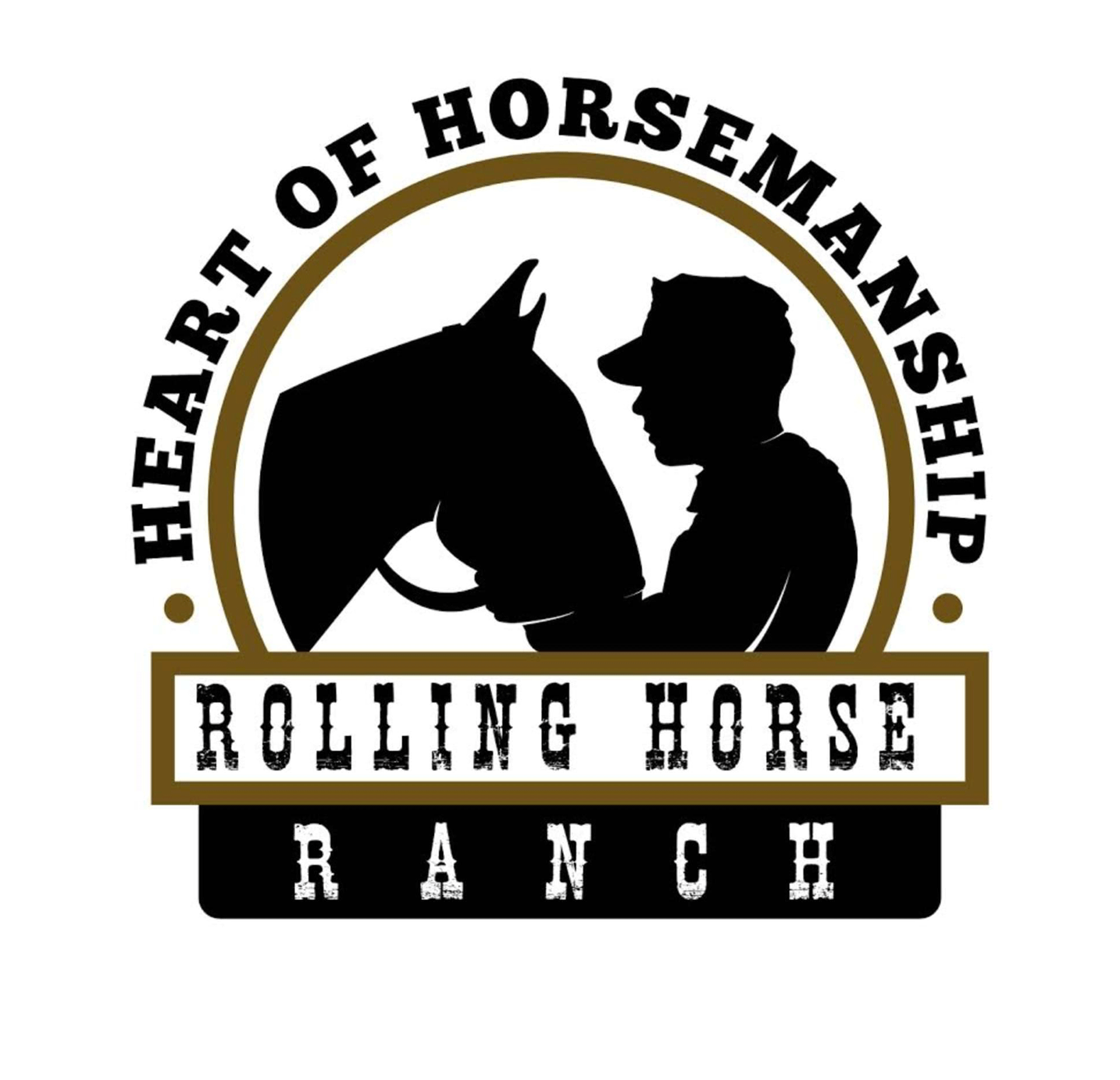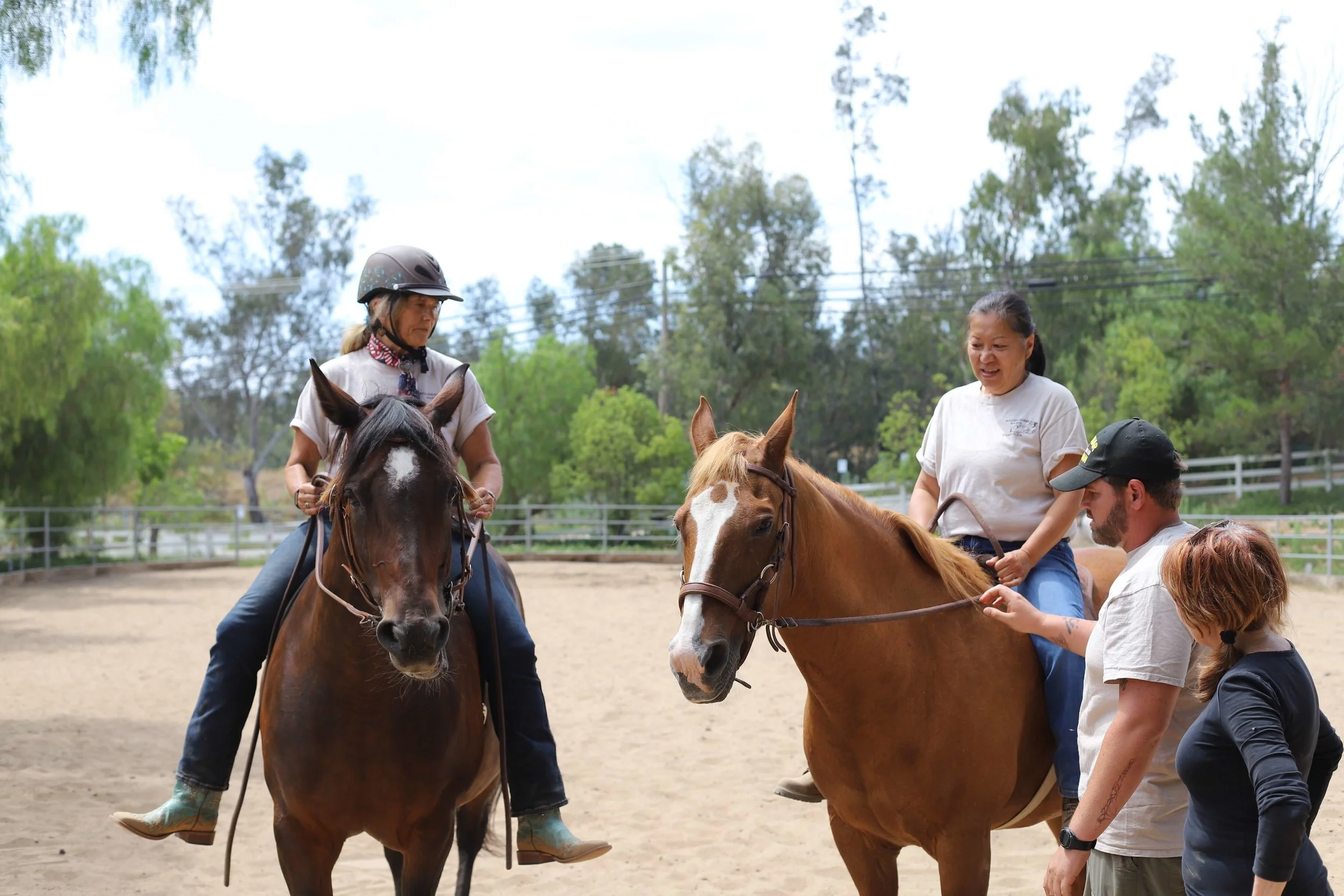Rolling Horse Ranch Veterans Program
DEEP WORK WITH OUR VETERANS
If you are a veteran suffering from post-traumatic stress disorder, your symptoms—anxiety, fear, flashbacks, and more—may feel insurmountable, despite traditional treatments and medications. However, researcher, professor, and horsewoman, Dr. Ellen Kaye Gehrke has created an extraordinary, non-pharmaceutical program to help minimize even the most debilitating PTSD symptoms: through heart centered connection with horses. Based on her evidence-based research, Gehrke developed an equine therapy program, called HEART OF HORSEMANSHIP©, at her ranch in Ramona, California, where veterans work with horses and learn how to
• Reestablish trust
• Stay present
• Communicate with confidence
• Find aliveness
• Work as a team
• Feel whole in their heart
HEART OF HORSEMANSHIP
This 30 hour course is offered in 8-10 distinct 3-hour sessions. Often it progresses in a week-to-week format. Each week or session builds on the connection from the heart with another sentient being, a horse. Additionally, participants have the opportunity to work as a community with one another and the faculty. While learning to ride a horse confidently, participants gain an acute awareness of the partnerships they can create with their horses which then becomes transferrable to their human interactions.
All faculty of Heart of Horsemanship have extensive backgrounds in western horsemanship and many are veterans or/or first responders. The horses at each site are friendly, wise, and all have worked in therapeutic programs for years. Some may be rescue horses who have been rehabilitated to serve in the healing environment. Safety is the number one priority. It is important that participants realize they are in a safe and positive place and to not fear horses, whether they have horse experience or not. The sessions are authentic, caring and sincere- otherwise it would not be effective.
Please note that the Heart of Horsemanship is partnered with the Institute for the Study of Horse-Human Interactions and you may be asked to participate in the ever-growing field of providing evidence-based research for this healing modality.
The Heart of Horsemanship program is an equine therapeutic learning experience which serves as a complementary non-pharmaceutical approach to health and healing. IN partnership with horses’ individuals who experience the anxiety and stress associated with post-traumatic stress disorder (PTSD) can re-build self-trust, regain trust with others, gain awareness about their own energy, and understand the impact of their energy on others. Participants work with horses in a small ranch setting where they progress from learning how to connect wholeheartedly with horses and humans, working successfully on ground-work skills, to eventually riding their horse as a team in the western tradition.
The work is done one-on-one and in small groups with highly trained teams of instructors, horses, counselors and other wranglers. Each participant selects a gentle, experienced horse to partner with for the duration of the program.
Learning Goals:
Experience an integrative and complementary approach to healing from traumatic events.
Increase knowledge of Heart of Horsemanship (HOH) research with the Institute for the study of horse human Interactions (ISHHI). The primary measures include heart rate variability (HRV) measures of the autonomic nervous systems and a survey of positive and negative affect (PANAS) which I a self -reporting tool for examining quality of life improvements.
Gain self-awareness of energy and how to work with it to develop successful connections with the horse partner and other people.
With the support of a team, develop horsemanship skills on the ground and in the saddle that transfer to more satisfying relationships with self and others.
Explore other complementary approaches, such as meditation, massage, acupuncture, healing touch, aromatherapy etc to support health and healing.
Reconnect with nature as a form of healing as humans are hardwired to need connection with nature and other forms of life.
Curriculum
Session 1: Theme is Orientation
Participants learn what to expect from the Heart of Horsemanship (HOH) experience and the approach to research is reviewed. The language of horses is revealed there are a series of experiential exercises to help sense the somatic aspect of working with horses.
Session 2: Establishing a Feeling of Trust
If horses have not been selected in session one then there is a focus on recognizing the connection and choosing your horse. Participants work with their wranglers and practice skills in obtaining a heart to heart connection with their mutually chosen horse. Horses are non-judgmental and this characteristic is critical for enhancing the opportunity to choose trust and healing.
Session 3: Recognizing and Building a True Connection
Through mindful activities, participants learn how to approach and catch their horse, learn the tools and feeling for grooming and practicing staying present and connected. Once the grooming is completed the horse-participant-wrangler team move to a round pen to build on connection by working at liberty with their horse (no lead lines).
Session 4: Sustaining a Connection Through Staying Present
It is easy to drift to other thoughts and worries. However, horses will not pay attention or look to you from a leader-partner perspective if the participant does not stay in the moment with their horses. Some people begin to realize how often they “check out.” Horses do not engage with those who are not present and their honest and real feedback allows for the practice of staying present in longer and longer periods. Participants continue working on the group building on communicating from the heart with no ropes or tools- just managing their energy and their heart.
Session 5: Going Together
Participants may build on saddling and getting on their horse- as a partner- not as a tool! No one is allowed to ride unless they truly experience the heart connection with their horse. When this happens there develops a sense of synchronicity and flow between the horse and human. When sitting on the horse and feeling the movement one begins to sense the universal field of flow and connection. The work in the saddle will be done at a walk until the rider gets the feel between themselves and their horse.
Session 6: Healing the Heart Connection and Communicating With Confidence
Most everyone is riding by this session and sensing how the movement with the horse contributes to the release of trauma. Emphasis is placed on softening the feel with the hands, learning to guide gently with the legs- overcoming any fear if there still is any residual feelings that sometimes occurs from being on a big animal. The experience is often increased confidence, improved feeling of vitality, clearer intentions in communicating with their horse and feeling a more open sense of connection between all those in the program as well as their horse.
Session 7: Finding Aliveness in you Body Together With Your Horse
This session sustains and builds upon the already existing relationship with the horse. There is more understanding of how the work on the ground translated to the experience in the saddle. Obstacles and patterns are introduced and participants need to stay aware and present in their body to be a helpful leader in guiding their horse over ground poles, through cones and around barrels. The focus stays on a light touch and noticing the slightest try with their horse.
Session 8: Working Together in Confident Performance
Horses, like people, feel better when they have a purpose and a job to do. This session is about leading for results and intention. Elements of leadership, trust, communication, presence and confidence are brought into play to ensure the rider practices care, calmness and fun with their horse partners. Often the ever present sense of anxiety disappears and the feeling of isolation that comes with issues of PTSD are diminished or gone when the participant gets to this stage of the relationship with their horse. There is a growing feeling of well-being among their fellow participants and wranglers.
Session 9: Feeling Wholehearted- Experiencing Pride, Joy and Confidence
The group has now experienced, both individually and collectively, the hard mental, physical and spiritual work that they have done up to this session. There is a whole feeling that symptoms of PTSD can be managed more effectively with the skills learned working in partnership and with open hearts. Participants express that they have improved confidence, self-esteem, reduction in anxiety, encouraged to venture out and open their hearts to the vulnerabilities of life knowing they carry their horses within their souls and the genuine support of the program leaders and colleagues.
Session 10: Synthesis and Reflection
This is the celebration of whole healing with horses and the support of program leaders and colleagues. Learning is anchored and discussions about future plans either with or without horses is reviewed.

